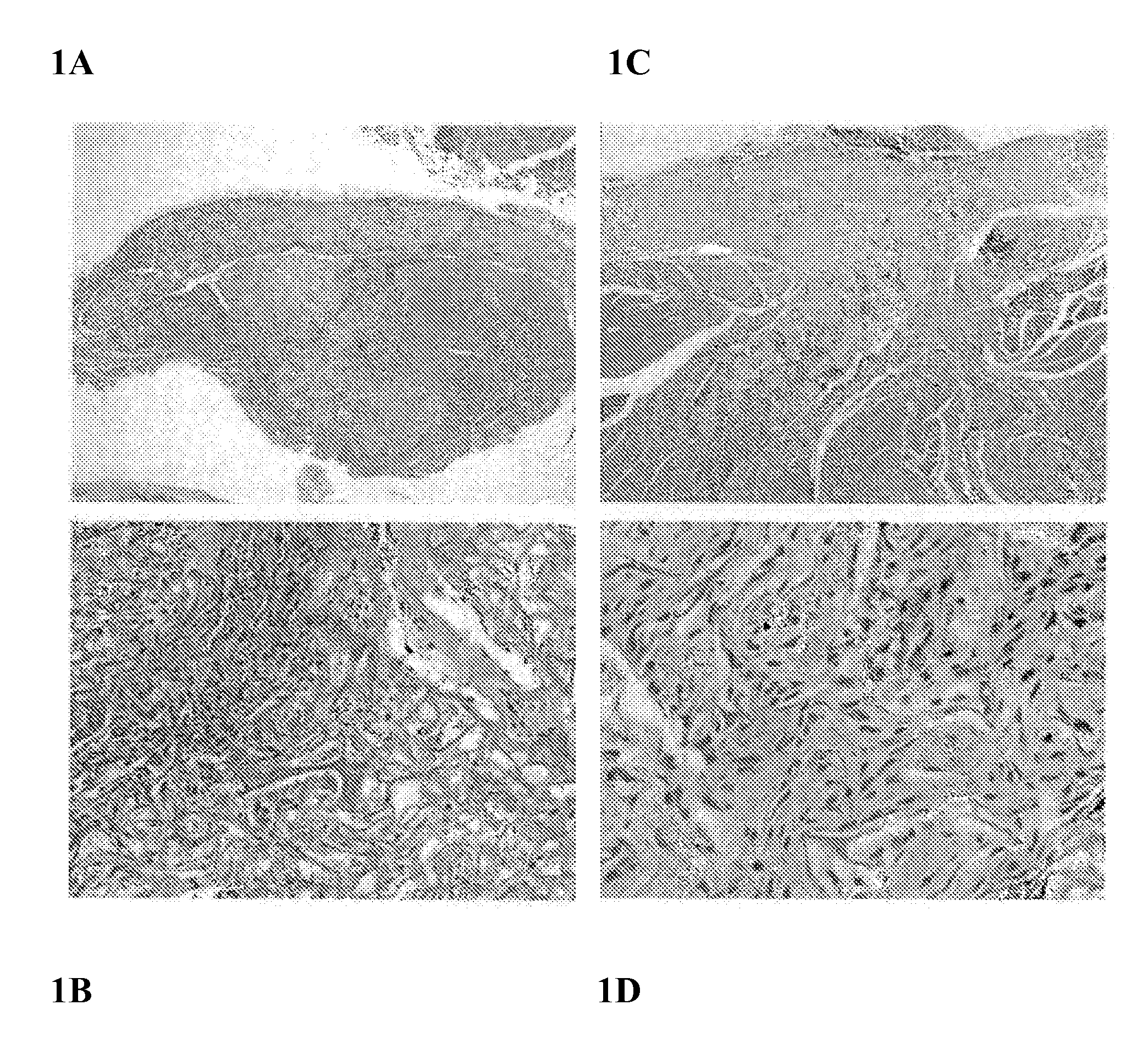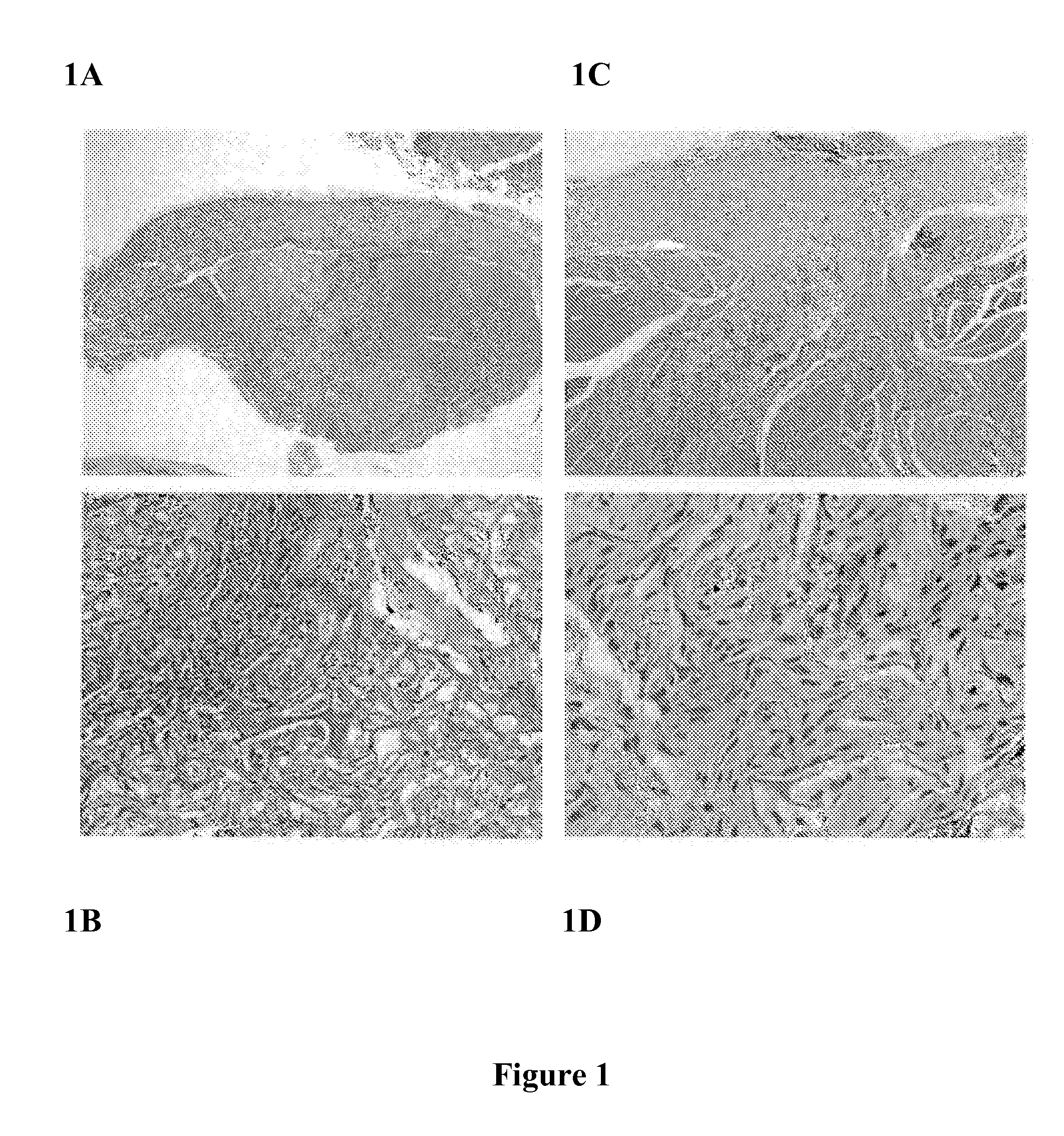Flowable wound matrix and its preparation and use
a flowable matrix and wound technology, applied in the field of flowable matrix material, can solve the problems of insufficient grafting with a sheet form, ineffective tissue repair, infection and/or scarring, etc., and achieve the effect of effective delivery to the wound si
- Summary
- Abstract
- Description
- Claims
- Application Information
AI Technical Summary
Benefits of technology
Problems solved by technology
Method used
Image
Examples
example 1
[0054]Preparation of the Flowable wound matrix. A dispersion of bovine tendon collagen is prepared at a concentration of 0.1% to 2.0% wt:vol, preferably about 0.75%. Glycosaminoglycan (GAG) can optionally be added to the dispersion at a concentration of 0.1% to 20% wt:wt with reference to the amount of collagen. The dispersion is then placed into a suitable casting mold, typically a stainless steel tray, to a depth of 1 mm to 10 mm, preferably about 2 mm. The dispersion is then frozen and lyophilized to dryness.
[0055]The collagen matrix obtained from this process is then dehydro-thermally treated by placing the matrix into a vacuum oven and heating to approximately 105° C. under vacuum for 18 to 24 hours. The DHT crosslinked collagen matrix is then chemically crosslinked by immersing the collagen matrix in 0.5% Gluteraldehyde for 2 to 24 hours. The chemically crosslinked collagen matrix is then thoroughly rinsed with PBS and deionized water.
[0056]Each collagen / GAG sheet is compresse...
example 2
[0057]Referring to FIG. 1, flowable collagen / GAG matrix are generated and delivered in a flowable form from a syringe fitted with a large gauge needle. The material was tested in a guinea pig deep muscle wound and evaluated after 2, 4 and 8 weeks with favorable cell and vascular ingrowth and tissue response. Using an approved protocol and following strict animal use guidelines, the flowable collagen material was injected into approximately 6 mm×6 mm defects in the dorsal muscle of guinea pigs. After 2, 4, and 8 weeks, the animals were euthanized and a histological analysis was performed on the treated wound sites. FIG. 1 shows representative photomicrographs of cross-sections of a formalin fixed, H&E stained tissue across the wound site for the 2 and 8 week time points. Good contact between the wound margins and the implanted material can be seen. A robust cellular in-growth is clearly visible with significant amounts of new collagen and extracellular matrix evident surrounding the ...
example 3
[0058]Determination of Particle Size. The particle size of the flowable wound matrix material was measured by a laser diffraction type particle size analyzer and found to be in the range of about 500-1800 micrometers.
PUM
| Property | Measurement | Unit |
|---|---|---|
| Pore size | aaaaa | aaaaa |
| Pore size | aaaaa | aaaaa |
| Pore size | aaaaa | aaaaa |
Abstract
Description
Claims
Application Information
 Login to View More
Login to View More - R&D
- Intellectual Property
- Life Sciences
- Materials
- Tech Scout
- Unparalleled Data Quality
- Higher Quality Content
- 60% Fewer Hallucinations
Browse by: Latest US Patents, China's latest patents, Technical Efficacy Thesaurus, Application Domain, Technology Topic, Popular Technical Reports.
© 2025 PatSnap. All rights reserved.Legal|Privacy policy|Modern Slavery Act Transparency Statement|Sitemap|About US| Contact US: help@patsnap.com


